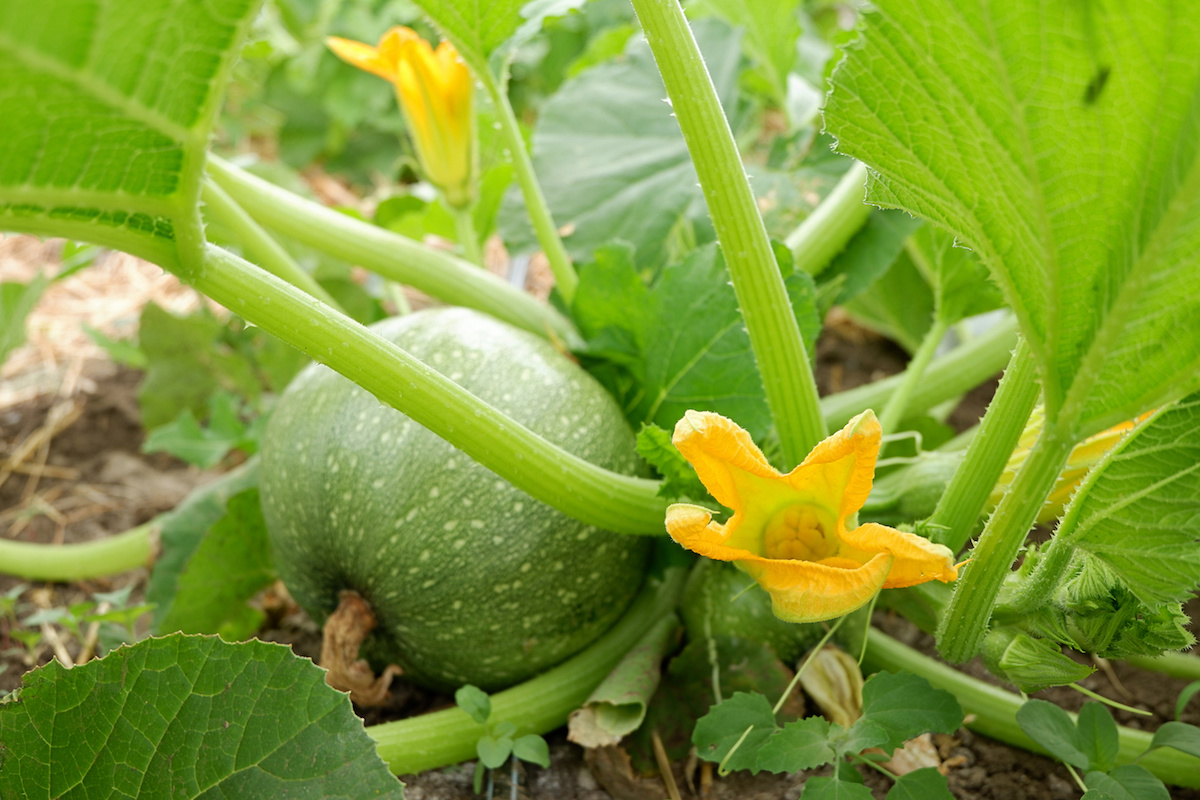Cucurbita pepo

|
|
Cucurbita pepo Common Names: Pumpkin, Summer Squash, Zucchini, Field
Pumpkin, Courgette Scientific
Classification Kingdom: Plantae Clade: Tracheophytes Clade: Angiosperms Clade: Eudicots Clade: Rosids Order: Cucurbitales Family: Cucurbitaceae Genus: Cucurbita Species: C. pepo Binomial Name: Cucurbita pepo L. Synonyms: Citrullus variegatus Schrad. ex M.Roem., Cucumis pepo (L.) Dumort., Cucurbita aurantia Willd., Cucurbita melopepo L., Cucurbita verrucosa L. Morphological Description Cucurbita pepo is
an annual, monoecious, herbaceous vine or bush, sprawling 0.3–3 m, with
prickly, ridged stems and tendrils. Key features include: · Leaves: Broad, 20–35 cm wide, 3–5 lobed, coarse, hairy, dark green · Flowers: Large, yellow, 7–10 cm across, solitary or clustered,
blooming June–October · Fruit: Highly variable pepo—globular, elongated, or flattened, 5–50
cm long, rind smooth, ribbed, or warty; flesh yellow to orange, sweet or bland · Seeds: Flat, oval, 1–2 cm long, white to tan, 50–300 per fruit Its polymorphism yields
cultivars like zucchini and pumpkins (Paris, 1986). Distribution and Habitat Cucurbita pepo originated
in Central America (Mexico), domesticated 8,000–10,000 years ago. Now
cultivated globally except in arctic zones, it thrives in: · Regions: Americas, Africa, Asia, Europe; wild forms in Mexico (subsp.
fraterna, texana) · Climate: Warm, 20–30°C, rainfall 500–1,500 mm · Soil: Well-drained, loamy, pH 5.5–7.0 · Elevation: Sea level to 2,000 m Introduced to Europe in
the 16th century, it’s vital in tropical Africa (Decker-Walters et al., 2002). Ethnopharmacology Cucurbita pepo has
a rich ethnomedicinal history, validated by studies: · Anthelmintic: Seeds in Eritrea treat tapeworms; ethanol extracts
kill Onchocerca ochengi (LC₅₀ 17–20 µg/mL) (Kalmobé et al., 2017). · Anti-inflammatory: Pulp in Nigeria for burns; seed oil
reduces edema in rats (40% at 300 mg/kg) (Almohaimeed et al., 2021). · Prostate Health: Seeds in Germany for BPH; clinical trials
show 41.4% symptom reduction (500 mg extract) (Schiebel-Schlosser &
Friederich, 1998). · Wound Healing: Seed oil in Tunisia heals rat wounds, promoting collagen
synthesis (Bardaa et al., 2016). · Hypnotic: Fruit in Iran for insomnia; extracts prolong sleep in mice
(200 mg/kg) (Askari et al., 2018). · Antioxidant: Flowers in Italy combat oxidative stress (ABTS IC₅₀ 144.77 µg/mL) (Mollica et al., 2019). ⚠ Toxicity Profile: Safe in moderation; wild forms contain cucurbitacins, causing bitterness and nausea. Excessive seed intake may intoxicate poultry (LD₅₀ > 2,000 mg/kg in rats). Avoid in pregnancy due to limited data (Salehi et al., 2019). Additional Uses · Culinary: Fruit in soups, dried; seeds (pepitas) roasted; flowers in
fritters · Economic: Seed oil for cooking, lighting; stems for toys in Nigeria · Ecological: Pollen for squash bees; host to melonworm moth, squash vine
borer · Cultural: Mats from dried strips by Native Americans References
External Links More Pictures |
|
| Compounds of Cucurbita pepo | |
| References |